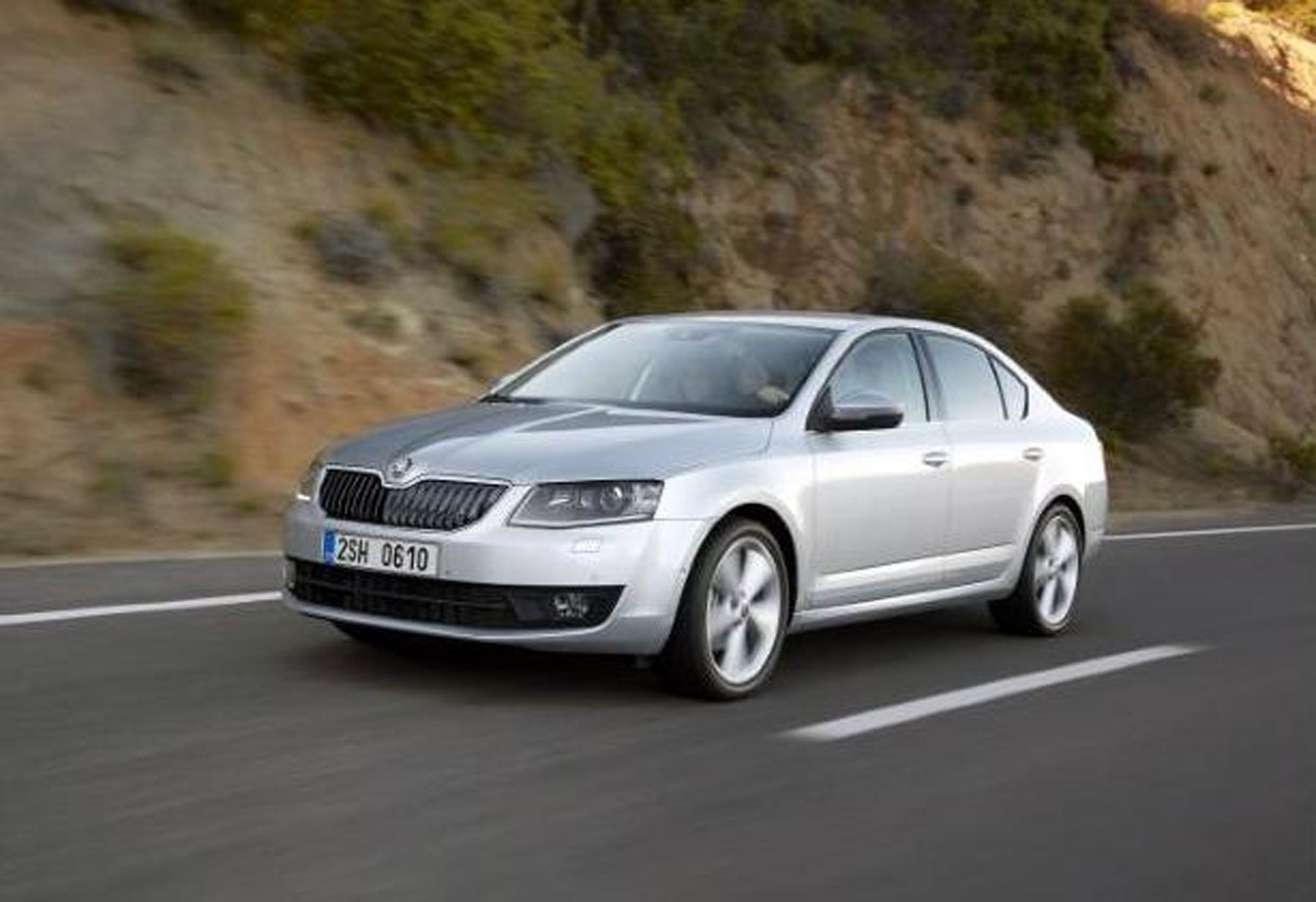The third generation of Skoda Octavia uses a new development for gasoline and diesel engines. Compared to their predecessors, emissions have been reduced up to 23 percent. In total, there will be eight motorizations available: four TSI gasoline engines and four Diesel TDI Common-rail engines.
These eight motorizations, start from 1.2 TSI of 63 kW to the high performance engine 1.8 TSI with a power of 132 kW. The sustainable Greenline version of the new Octavia, a 1.6 TDI with a power of 81 kW, has a CO2 emission value of only 89 g/km and consumes less than 3.4 liters of diesel per 100 km. In EU countries, all engines - with the exception of basic engines - come standard with a starting / stop system and recovery of braking energy through the starter generator (Green Tec / Greenline models). Transmissions include a double clutch manual or automatic gearbox.
Four gasoline engines from 63 to 132 kW
gasoline engines of the new Octavia Škoda, are turbocharged engines and direct injection, with a four -cylinder design and four valves.
The Octavia gasoline input engine is 1.2 TSI with 63 kW (86 hp) with a combined cycle consumption of 5.2 l/100 km and CO2 emissions of 119 g/km. Turboalimentation produces a maximum torque of 160 Nm (at 1,400 to 3,500 rpm). This engine comes with a 5 -speed manual change.
The improved performance version 1.2 TSI Tec Green, which includes a system stop/stop and recovery of braking energy, achieves a power of 77 kW (105 hp) and is even more economical, with a combined cycle fuel consumption of 4.9 l/100 km and CO2 emissions of 114 g/km. The TSI engine offers a maximum torque of 175 Nm to between 1,400 and 4,000 rpm. As an alternative to the six -speed manual change, a seven -speed DSG automatic transmission can be requested.
The 1.4 TSI Gasentec with 103 kW (140 hp) can be combined with a six -speed manual transmission or a seven -speed DSG automatic. The fuel consumption of 1.4 TSI is 5.3 l/100 km and CO2 emissions are 121 g/km whenever it is combined with a manual transmission and a Start/Stop technology. The engine reaches its maximum torque of 250 Nm to 1,500 and 3,500 rpm.
The most powerful gasoline engine in Octavia is the 1.8 TSI Greatc of 132 kW (180 hp). The maximum torque of 250 Nm is available between 1,250 and 5,000 rpm. In combination with a DSG 7 speed gearbox, fuel consumption is 5.7 l/100 km and emissions are 131 g of CO2 per kilometer.
TDI Diesel Motors with up to 320 Nm
All Diesel engines of the new Octavia are direct injection TDI engines with four cylinders and four -valve technology per cylinder.
The input diesel engine for the new Octavia is 1.6 TDI with 66 kW (90 hp), with a combined cycle consumption of 4.1 l/100 km and emissions of 109 g of CO2 per kilometer.
The fuel consumption of the 1.6 TDI Grantec of 77 kW (105 hp) with start/stop and the five -speed manual transmission is 3.8 l/100 km and CO2 emissions of 99 g/km. The engine offers a maximum torque of 250 Nm to between 1,500 and 2,750 rpm. In addition to the manual gearbox, this engine can also be requested with automatic seven -speed DSG transmission.
The Greenline-Version 1.6 TDI of 81 kW (110 hp) is the most economical diesel engine, which emits only 89 g/km of CO2 and has a fuel consumption of only 3.4 l/100 km. It is available with a six -speed manual transmission.
The most powerful diesel engine for the new Octavia is the 2.0 TDI Greatc of 110 kW (150 hp). This high -performance engine with a six -speed DSG transmission achieves excellent environmental values with fuel consumption only 4.5 l/100 km and CO2 emissions of 119 g/km. In addition, the engine stands out for its excellent characteristics of smoothness. Its maximum 320 Nm motor torque is between 1,750 and 3,000 rpm. Customers can choose between a six -speed manual change and a double clutch DSG transmission.
New generation of EA211 engines
The new EA211 engines is more compact than its predecessors on EA111, EA211, which offers more interior space. The mounting position of the engines has also been optimized. As in diesel engines, gasoline engines are mounted with the escape side looking back and is inclined at an angle of 12 degrees.
The weight of these pressure molten aluminum gasoline engines is only 97 kg for 1.2 TSI and 106 kg for 1.4 TSI. Compared to EA111 engines, it is a reduction of up to 22 kg. The crankshaft is a lighter 20 percent and the connecting rods have lost 30 percent of its weight.
The EA211 gasoline engine is equipped with a modern double circuit cooling system. This means that a high temperature circuit with a mechanically operated cooling pump cools the base engine, while a low temperature circuit flows through the exchanger and turbo-loader housing. The cylinder head circuit heats the interior of the cabin. The exhaust collector is integrated into the head of the cylinder, allowing the engine to heat more quickly, and this heat quickly passes to the passenger cabin. At high loads, exhaust gases are cooled by cooling fluid, reducing fuel consumption.
Diesel engines of the EA288 series are particularly economic. Compared to the previous generation, fuel consumption has been reduced by up to 0.8 l/100 km. The relevant components, such as escape, injection system, load and intercooler systems have improved. The components for the subsequent treatment of the exhaust gases, such as the oxidation catalyst and the diesel particle filter, are now closer to the engine.
The new diesel engines also have an innovative thermal management. During the engine heating phase, separate circuits cool the cylinder head and engine block, allowing engines to reach their operating temperature much faster.





















































